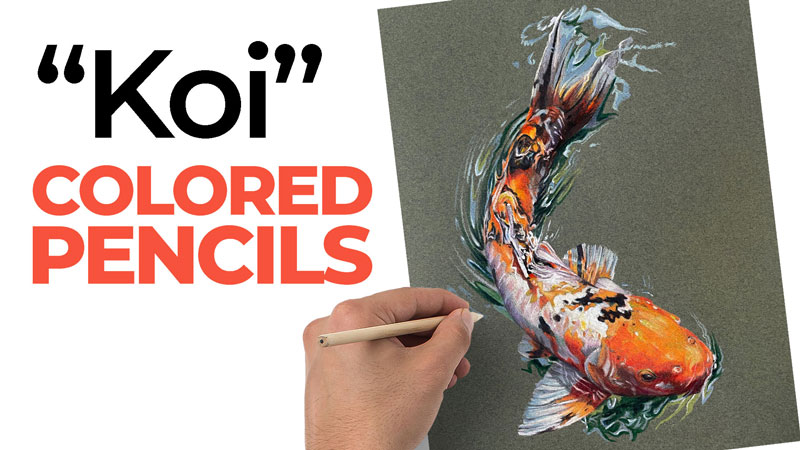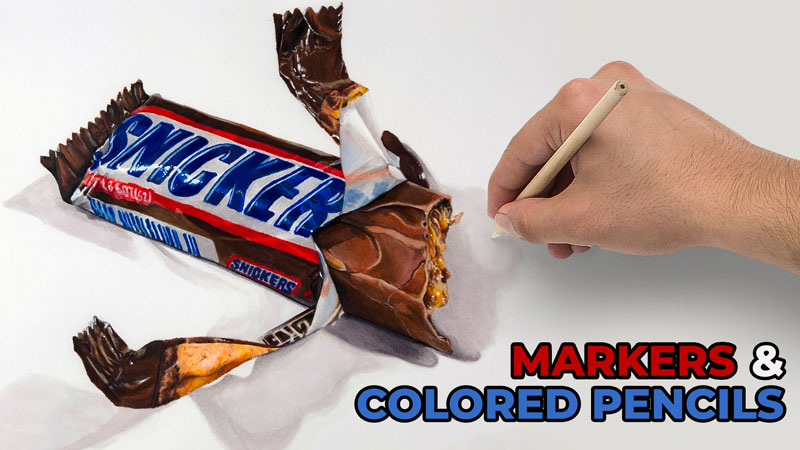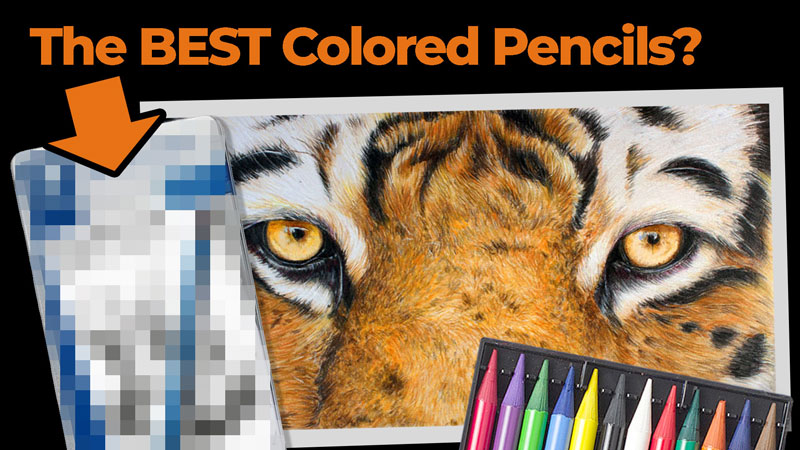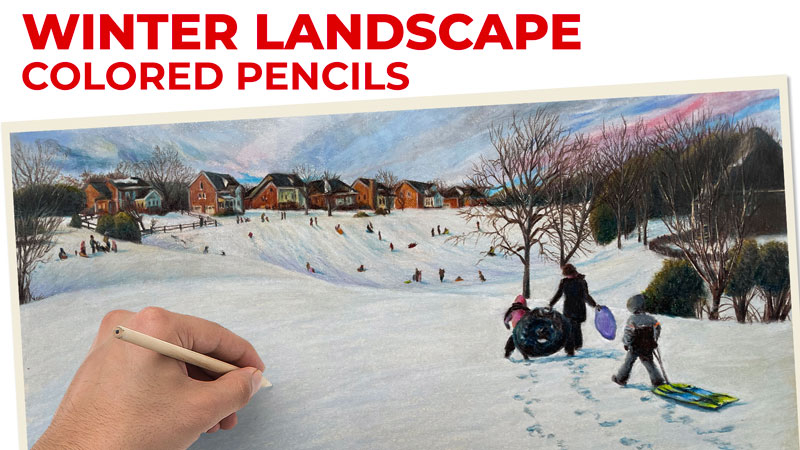Surfaces for Drawing with Colored Pencils
I’ve had quite a bit of experience drawing with colored pencils and I love colored pencils. Colored pencils are one of my favorite drawing mediums to work with and I’ve found some pretty exciting surfaces over the years. They all have their advantages and disadvantages.
In this post, I’m going to share with you each one of those surfaces, the advantages and disadvantages of each one of those surfaces, and the unique characteristics of each one. (Some of the links that follow are affiliate links which means that I make a small commission if you purchase at no additional cost to you.)
See also: Comparing Colored Pencils
Bristol Paper
The first paper I’m going to share with you is Bristol paper, specifically the vellum surface. Bristol paper comes in other surfaces other than vellum which are smoother surfaces. Bristol Paper, even with the vellum surface is relatively smooth, but the vellum surface does have a little bit of tooth or texture associated with it. It is capable of accepting multiple applications of colored pencils, but it’s still limited because of the overall smoothness of the paper.
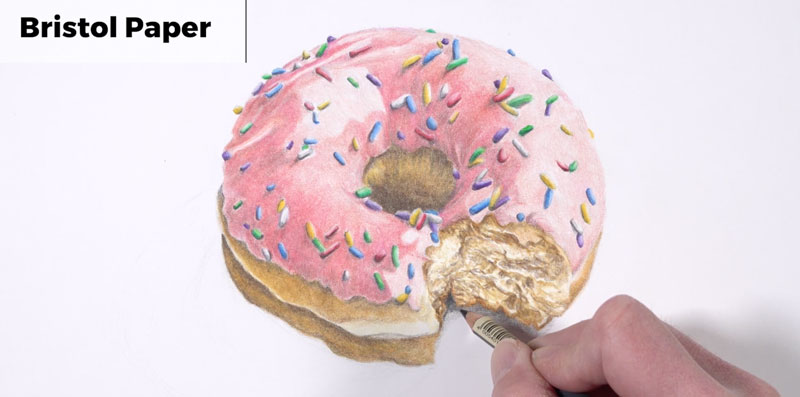
This paper is a little bit heavy. It’s very similar to card stock, but its rigidity makes it a great surface for working with colored pencils.
Notable Characteristics of Bristol Paper:
- Easy to find.
- Inexpensive.
- Easy to develop details.
- Limited layering.
- Only available in white.
Canson Mi-Teintes Pastel Paper
The second surface that I love to use with colored pencils is Canson Mi-Teintes Pastel Paper. Even though this paper is called pastel paper, it is a wonderful surface for colored pencils.
This paper features two distinct sides. One side is heavier in texture compared to the other side, but both sides have ample texture or tooth for multiple layered applications of colored pencil. This paper is easy to find and it comes in a variety of different colors. So if you want to allow that color to show through or if you just want some of that color to be your background, this is a major advantage.
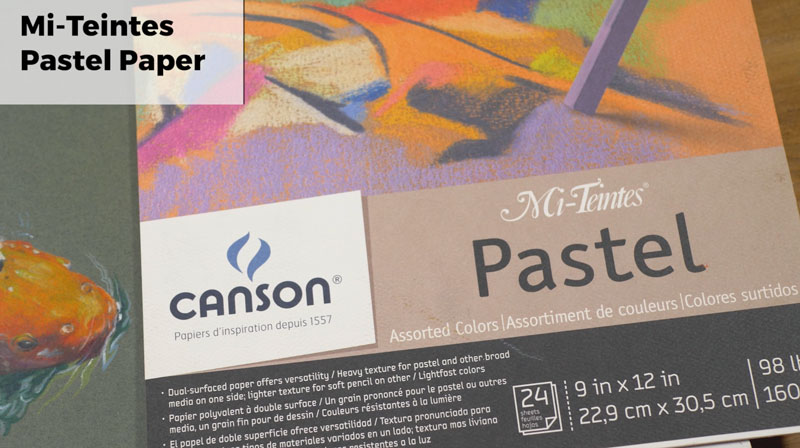
As I mentioned, this paper comes in two distinct sides, or it has two distinct sides associated with it. One side has a very heavy tooth, which will require multiple layered applications of colored pencils to fill in the tooth. The other side has a less pronounced tooth, but it’s still enough texture to accept multiple layered applications of colored pencils.
Notable Characteristics of Canson Mi-Teintes Pastel Paper:
- 2 distinct sides.
- Easy to find.
- Variety of colors.
- Heavy to medium tooth.
- Encourages layering.
- Tooth may be too heavy for some.
See also: How to Sharpen Any Pencil
PastelMat Paper
The third paper that’s absolutely fantastic for colored pencil drawing is PastelMat Paper by Clairefontaine. This paper has a heavy tooth, almost like fine grit sandpaper. This paper definitely encourages layering.
It is a great surface for use with other media like soft pastels. Again, this paper is called PastelMat Paper, but even though it’s called PastelMat Paper, it’s still great for colored pencils. If you want to use soft pastels in conjunction with the colored pencils, then this is a great surface for that. This paper comes in a variety of colors, so you have that middle value to start with and that’s going to encourage a full range of value in your drawings.
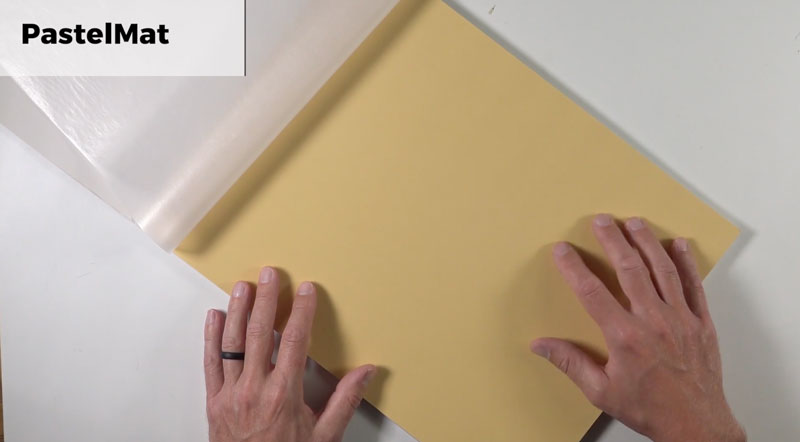
This paper is heavy and high quality. But because of this, it’s going to be expensive. In fact, compared to the other papers, this is probably the most expensive paper on the list and it is hard to get in some locations. For where I am in the world, I do have to order it online, and it does take quite a while to get to me.
Notable Characteristics of PastelMat Paper:
- Heavy tooth.
- Encourages layering.
- Great for combining with pastels.
- Variety of colors.
- Heavy, high quality paper.
- Expensive.
- May be difficult to find.
Stonehenge Paper
Stonehenge Paper is a soft paper, but it does feature a fairly heavy tooth. You can easily create multiple layered applications on the surface, which again is so important to building up that depth and color that you want in your colored pencil drawings.
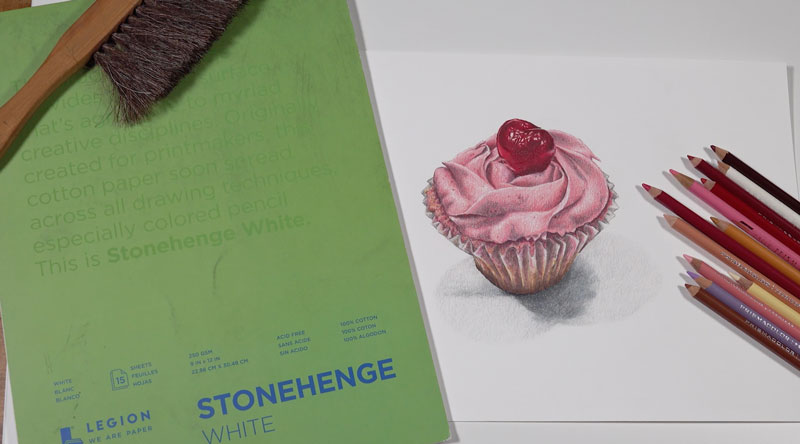
This paper is 100% cotton, so it’s really soft. But, there’s plenty of tooth for layering. It’s available as large sheets and smaller pads. So if you want to create larger colored pencil drawings, you’ve got that option. It’s probably my favorite surface for colored pencil drawing.
Stonehenge paper is great for using other drawing mediums such as graphite. If you’re interested in creating graphite drawings and colored pencil drawings, Stonehenge Paper might be a great choice for both.
Notable Characteristics of Stonehenge Paper:
- Soft paper with a medium tooth.
- 100% cotton.
- Available as large sheets and smaller pads.
- Great for other drawing mediums.
- Expensive.
- May be difficult to find.
- Limited colors.
Dura-Lar Polyester Film
One of the major disadvantages to using colored pencils is that they can be extremely difficult to erase. However, this next paper on the list takes care of that problem for us. Dura-lar is a polester film.

This paper is unique on this list because it has a very, very smooth surface. The tooth of this paper is very weak and that means that it’s going to be difficult to create multiple layered applications. There is a limit to how many layers you can apply to the surface, so you really have to think about your color choices when you’re using this paper.
The major advantage is that this paper is very easy to remove colored pencils. You can erase from the surface, and you can even use tools like the slice tool to remove the colored pencil from the surface. It’s almost like there has never been colored pencils applied to the surface at all. It’s really fantastic for that.
This paper is also semi-translucent, meaning that tracing and transferring images is pretty easy. One of the disadvantages of this paper is the smooth tooth or texture. It can only handle a few layers on the surface, but that disadvantage may be outweighed by the advantage of erasing, which is a completely unique aspect of this paper
Notable Characteristics of Dura-lar Polyester Film:
- Smooth surface with a weak tooth.
- Limited layering.
- Easy to erase and remove colored pencils.
- Translucency makes it easy to trace or transfer images.
Marker Paper
The last paper on this list is somewhat of a bonus paper because you do have to use it with another medium to get the most out of it. And the paper I’m referring to is Marker paper. Again, this is a paper that doesn’t have anything with colored pencils in the name, but it’s actually a pretty good surface for colored pencils if – and that’s a big if – you are using it alongside alcohol-based markers.
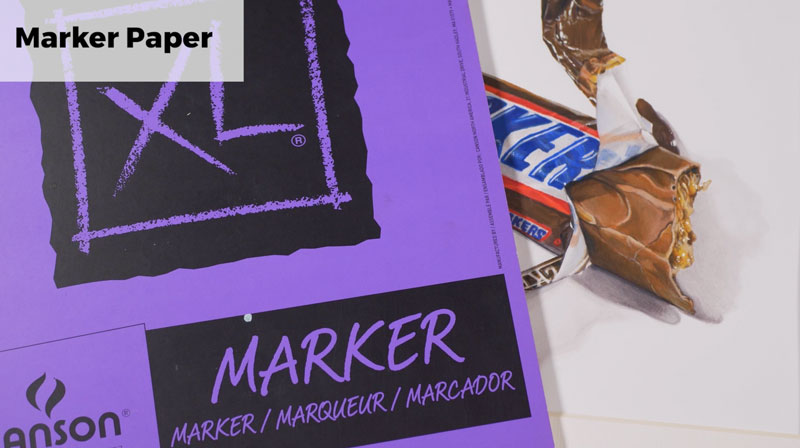
You can apply the alcohol-based markers as a base, which will cover large areas of the surface quickly. This saves time because colored pencil drawing is a time-intensive activity. But when we combine colored pencils with markers, we save quite a bit of time.
The disadvantage is that this paper is super smooth, so layers are limited. But when you’re using colored pencils in conjunction with markers, this isn’t really a big deal. Marker paper is a surface that you might consider that you might not have considered before but it’s dependent on using it with markers in order to get the most out of it.
Notable Characteristics of Marker paper:
- Great for use with alcohol-based markers.
- Saves time.
- Smooth surface has a weak tooth.
The Best Papers for Colored Pencils – Conclusion
Colored pencils are at their best when they are used on a surface or paper that allows you to use them to their full potential. Each paper has its own advantages and disadvantages. No paper is perfect, but each can be used to develop wonderful, professional colored pencil drawings.
If so, join over 36,000 others that receive our newsletter with new drawing and painting lessons. Plus, check out three of our course videos and ebooks for free.


